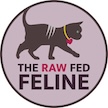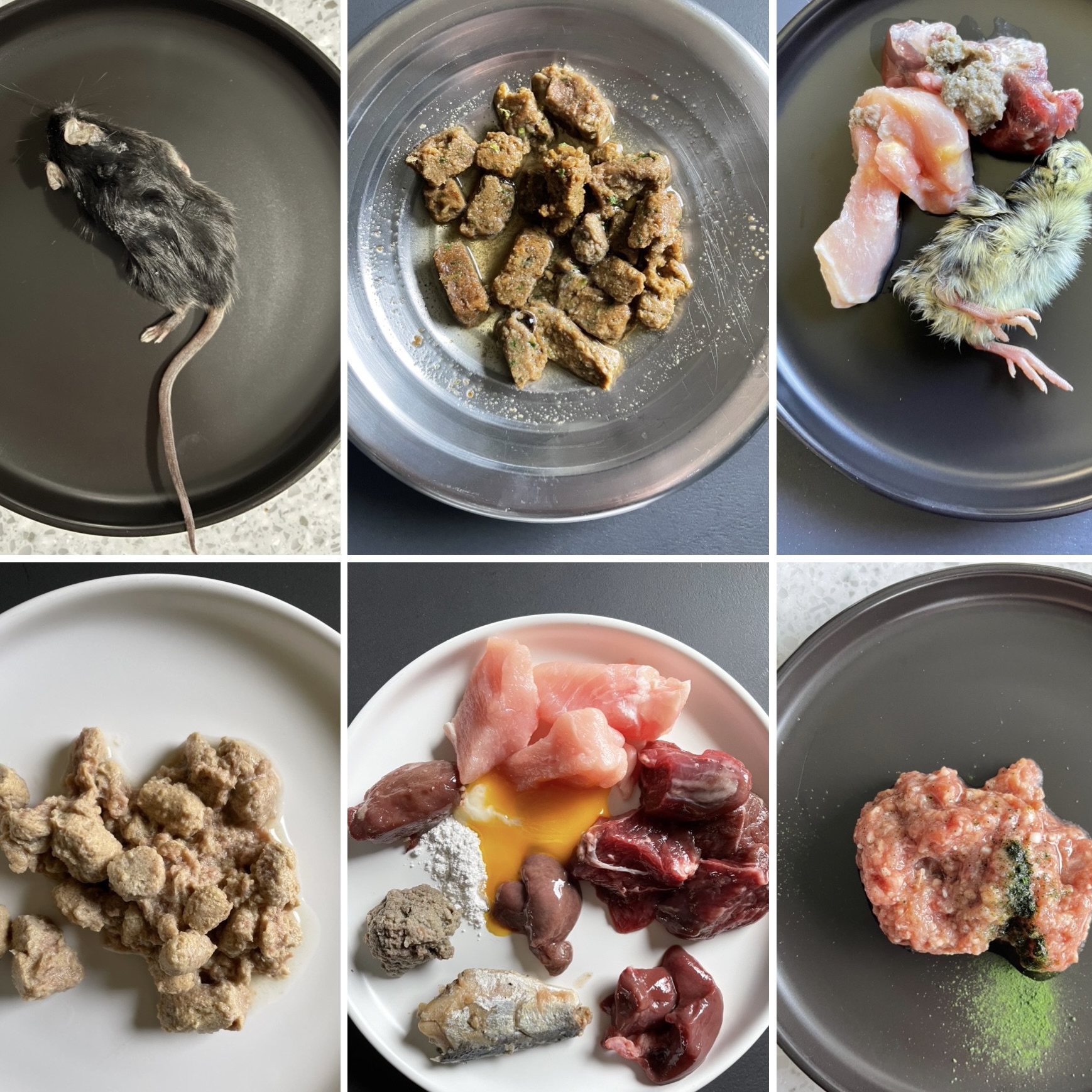Now that we’ve covered how to transition your cat to eating their new raw food, let’s talk about the importance of feeding a varied diet. Cats are generalist carnivores, which means that in the wild they will eat many different prey animals that are available—birds, rodents, reptiles, insects, etc. They are not designed to eat the same thing, day in and day out. Cats live on every continent with the exception of Antartica. This is possible, in part, due to their adaptability to eat what is available in their environment. So let’s see how we can provide a varied diet to our raw fed house cats.
Reasons to feed a varied diet
In addition to it being a more natural way for cats to eat, here are some important reasons for feeding a diverse, varied diet:
~to deter boredom and provide mental stimulation for your cat;
~if there is ever a recall, formula change, or supply issues–your cat has other foods to eat;
~to help minimize any imbalances in any one food;
~to provide a more nutrient dense nutritional profile;
~and to support a healthy gut microbiome.
Let’s take a look at each of these reasons in more detail.
The first is pretty straightforward—if fed the same food everyday, you can end up with a very bored cat. This could lead to your cat refusing the food altogether. This is problematic because then there is no other food that your cat is used to eating to offer instead. This is easily avoided by feeding variety in the diet. Offering different foods in rotation keeps things interesting and mentally stimulating for your cat.
Recalls, formula changes, and as COVID demonstrated, supply chain issues can happen. These reasons are more of an issue when feeding commercial raw foods and completers. There were many raw feeders stuck in this situation when RadCat closed their business. RadCat was a very popular and well liked frozen raw food. Many people only fed this one brand of food to their cats. Many raw feeders were scrambling to find an alternative for their cats when it wasn’t available anymore.
Whether you are feeding a commercial food or making your cat’s raw food, nothing is perfect. By feeding a varied diet, you provide protection against any potential ongoing imbalances. For example, chicken is a popular meat to include in a raw diet as it is easy to source and generally inexpensive; however, it is also higher in omega-6s, which when out of balance can contribute to inflammation. Feeding different foods in rotation helps minimize issues like this one.
Every meat, organ, fish, etc. has a different nutrient profile. By feeding a variety to your cat you maximize the nutritional composition of the overall diet. Some proteins have more zinc, others more thiamine, and some livers have more copper, livers from different animals have varying amounts of vitamin A, you get the idea.
Last, but certainly not least, if you haven’t heard about the gut microbiome, then it’s something to check out. The microbiome is basically another organ in the body and it is deeply impacted by nutrition. It has a significant impact on your cat’s overall health and immunity. And that is just the tip of the iceberg. There is new research all the time about the microbiome and its importance to health. One thing we do know for certain is that one of the very best ways to support a healthy microbiome is to feed a diverse and varied diet. Variety for the win!
Ways to feed a variety in rotation
Here are some ways to offer variety in your cat’s diet:
~commercial freeze dried & frozen raw: alternating brands and flavors
~completers: using different proteins & livers (if required), offering ground & chunked meats, using different brands of completers
~DIY/Prey Model Raw/NRC based raw: feeding different meats, bones, and organs from various animals, offering ground & chunked pieces
~whole prey: feeding different animals—mice, rats, chicks, quail, rabbits, hamsters, gerbils; offering both male and female animals
~omega-3s: giving different oily fish (herring, sardines, mackerel, anchovy), krill or fish oils, GLM powder
~eggs: including eggs from various birds—quail, chicken, duck, goose
And of course, you can vary the ways you feed at each meal/each day: freeze dried raw one meal, prey model raw the next, etc. Your cat will benefit from a slow introduction to any new foods. But once you know that your cat is ok with a food, then you can freely feed it in rotation without further transition needed.
Feeding a variety of different foods in rotation can be really fun for you and your cat! I find it one of the most enjoyable aspects of raw feeding and I hope that you will, too.
Reference
Fitzgerald, B. Mike and Turner, Dennis C. “Hunting Behaviour of Domestic Cats and Their Impact on Prey Populations.” In The Domestic Cat: The Biology of Its Behaviour, edited by Dennis C. Turner and Patrick.


